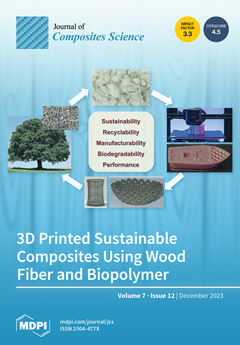Interest in the modification of zirconium-containing ceramics is rooted in their great prospects for application as materials for creating inert matrices of dispersed nuclear fuel, which can replace traditional fuel containing uranium dioxide, as well as increase the degree of its burnup. Moreover,
[...] Read more.
Interest in the modification of zirconium-containing ceramics is rooted in their great prospects for application as materials for creating inert matrices of dispersed nuclear fuel, which can replace traditional fuel containing uranium dioxide, as well as increase the degree of its burnup. Moreover, among the variety of different types of ceramics offered, zirconium dioxide is the most promising, since it has higher thermal conductivity values compared to other types of ceramics, as well as low volumetric thermal expansion. Moreover, the key limitations in the application of these types of ceramics as materials for creating inert matrices are polymorphic transformations, which have a negative impact on changes in the properties of ceramics under external influences. The evaluation results of the impact of change in the ZrO
2 ceramics’ phase composition on the radiation damage resistance when subjected to irradiation with heavy ions, comparable in energy to fission fragments, are presented. The objects of study were samples of ZrO
2 ceramics doped with MgO, the variation in the concentration of which leads to an acceleration of the processes of polymorphic transformations during thermal sintering, as well as the formation of a ZrO
2/MgO-type structure with inclusions in the form of MgO grains. The results of the irradiation effect on the stability of the crystal structure of ceramics to deformation swelling due to the accumulation of deformation inclusions showed that ceramics with a monoclinic structure type are the least stable, for which, in the case of high irradiation fluences, the accumulation of deformation distortions leads to polymorphic transformations of the m—ZrO
2 → t—ZrO
2 type. During the evaluation of the irradiation effect on the change in mechanical properties and the softening degree, it was found that phase transformations of the m—ZrO
2 → t—ZrO
2 and t—ZrO
2 → c—ZrO
2 types lead to an increase in crack resistance by 1.5–2.0 times. Meanwhile, the formation of a structure of the ZrO
2/MgO type with inclusions in the form of MgO grains in the interboundary space results in a softening resistance growth by over 7-fold. During tests for determining thermophysical parameters, as well as maintaining stability to crystal structure thermal expansion during prolonged thermal exposure, it was found that phase transformations associated with polymorphic transformations of the t—ZrO
2 → c—ZrO
2 type led to the preservation of the stability of thermophysical properties, even in the case of high irradiation fluences.
Full article





